Mastering Potato Dough: Techniques and Insights
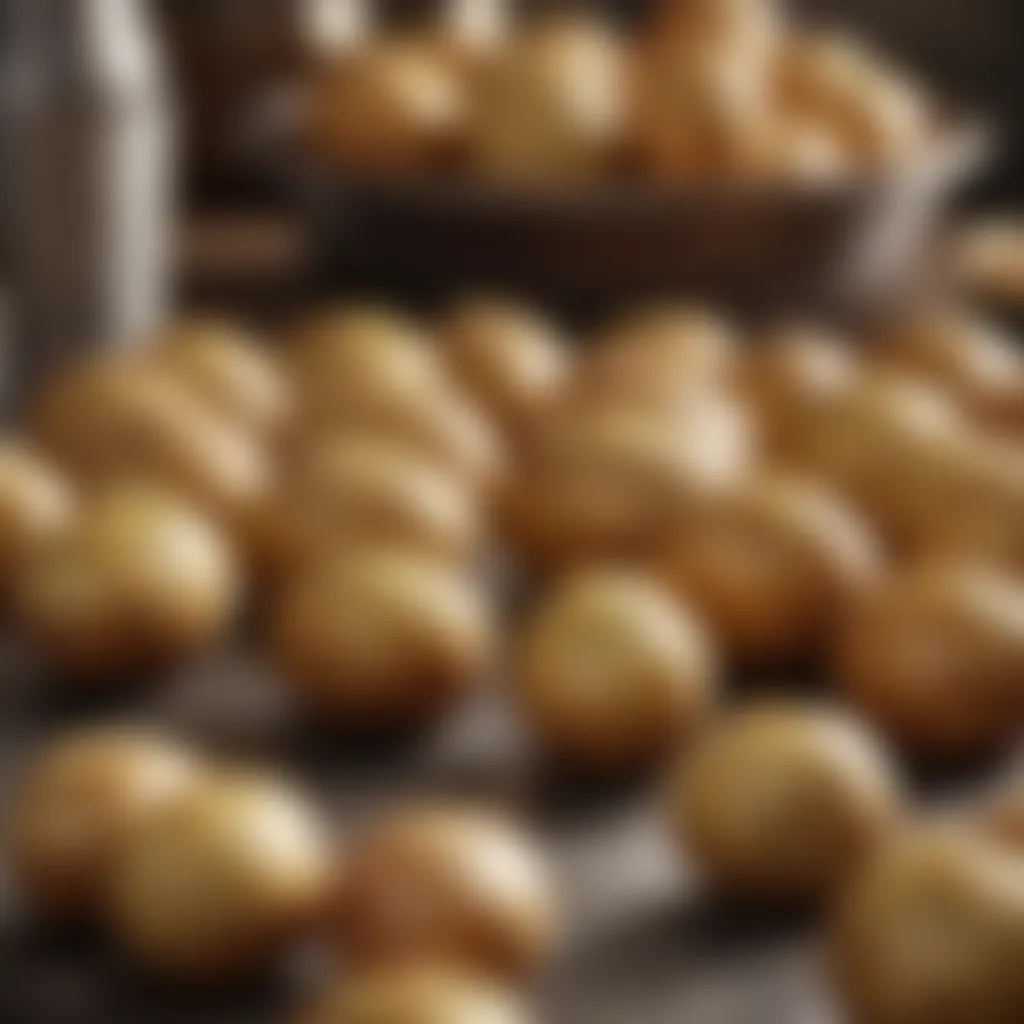
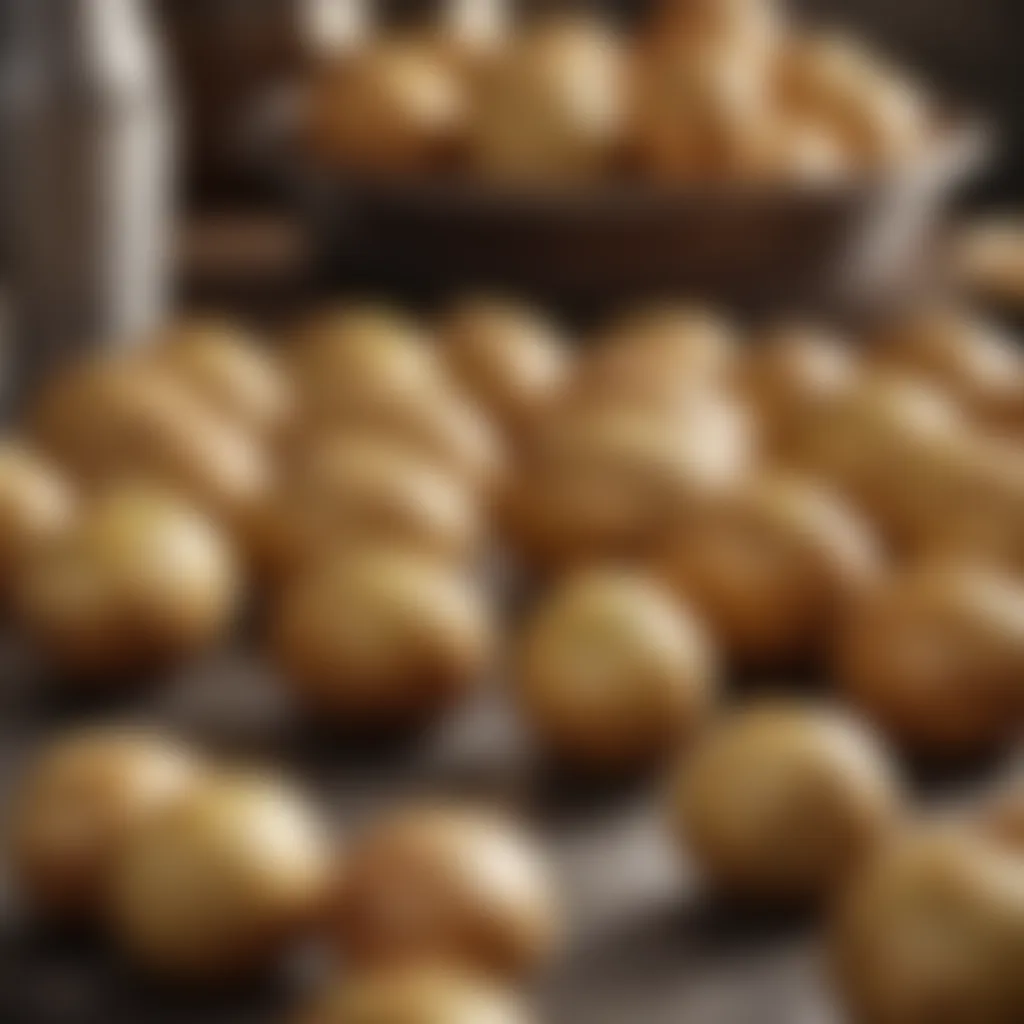
Intro
Potato dough, often regarded as a culinary chameleon, offers a foundation for a myriad of delicious dishes. Whether you’re looking to whip up comforting gnocchi, hearty dumplings, or even delicate pastries, the secret lies in understanding how to harness the unique qualities of potatoes. With this guide, you'll be diving into the rich world of potato dough, learning not just how to make it, but also the cultural significance it has around the globe. From the type of potatoes to use, to the secret techniques that ensure success, you will soon realize that crafting potato dough is as much an art as it is a science.
Junior cooks or experienced chefs alike will glean valuable insights that elevate their culinary repertoire. So, grab your apron and let’s embark on this flavorful journey that celebrates one of earth’s most humble yet versatile ingredients: the potato.
Ingredients:
To start crafting the perfect potato dough, you’ll need to gather the following ingredients. Each component plays a pivotal role in achieving the desired texture and flavor profile:
- 2 cups of starchy potatoes (like Russets or Idaho potatoes)
- 1 cup of all-purpose flour
- 1 large egg
- 1 teaspoon of salt
- Optional: A pinch of nutmeg or garlic powder for added flavor
Preparation Steps:
Once you’ve assembled your ingredients, it's time to prepare the potato dough. Follow these detailed instructions closely:
- Prep the Potatoes:
- Boil:
- Drain and Dry:
- Mash:
- Combine Ingredients:
- Peel the potatoes and cut them into equal-sized chunks.
- Place them in a pot and cover with cold water. Add a pinch of salt.
- Bring the water to a boil over medium-high heat.
- Cook until the potatoes are fork-tender, about 15-20 minutes.
- Drain the potatoes and let them sit for a few minutes to evaporate excess moisture.
- This step helps in avoiding a sticky dough.
- Use a potato ricer or masher to break down the potatoes until completely smooth.
- Allow the mash to cool for a few minutes.
- In a large mixing bowl, combine the potato mash, flour, egg, and salt.
- Mix gently until incorporated, being careful not to overwork the dough.
Technical Aspects:
As you dive deeper into potato dough preparation, understanding the technical side will greatly enhance your results. Pay attention to:
- Temperature Settings: Always use cold potatoes for dough-making. Warm potatoes can lead to a gummy texture.
- Timing Specifics: Boiling the potatoes until they are just tender ensures they won’t absorb too much water.
- Critical Techniques: Incorporating the flour gradually helps maintain the right balance of texture.
Cooking Process:
When it comes to cooking with your freshly made potato dough, following these sequential steps will ensure the best results:
- Shape the Dough:
- Cook the Pasta:
- Toss with Sauce:
- Roll the dough into thick ropes, then cut them into small pieces for gnocchi or press into molds for dumplings.
- Bring a large pot of salted water to a boil. Add your potato dough pieces, cooking them until they float to the surface (about 2-4 minutes).
- Remove them promptly and place them in a strainer.
- Transfer your cooked potato-based dish to a skillet with your choice of sauce. Toss gently to coat.
"When crafting potato dough, patience and practice are key. Don’t rush through the process, let the flavors develop naturally."
Troubleshooting Tips:
Even the most seasoned cooks can encounter a few bumps during potato dough preparation. Here are some common missteps and how to remedy them:
- Dough is too sticky? Add a bit more flour, but do it gradually to avoid making the dough tough.
- Dough falls apart while cooking? This often indicates that the potatoes were too watery; next time, ensure they're thoroughly cooked and dried.
- Flavor is lacking? Consider enhancing with herbs or spices that complement your dish well.
As you grasp these facets of making potato dough, you'll be well-equipped to experiment and create dishes that are not only delicious but also deeply satisfying. The journey doesn’t end here; with practice and variation, you’ll find countless culinary avenues open before you.
Prologue to Potato Dough
Potato dough has carved its place in culinary traditions across the globe, standing out for both its versatility and ease of preparation. This introduction sets the stage for understanding how potatoes, a humble staple, can transform into a base for a wide range of dishes, from gnocchi to pastries. The appeal of potato dough lies not just in its capacity to absorb flavors but in its transformative abilities—taking on various textures and enriching meals, making it a noteworthy topic in this comprehensive guide.
Exploring potato dough invites home cooks to experiment and recreate cherished family recipes or to dive into innovative culinary experimentation. One of the many benefits is that it serves as an excellent medium for different flavors, enabling the use of spices, herbs, and other ingredients that can elevate a dish. Furthermore, understanding potato dough can save time in meal prep, offering an efficient option for weeknight dinners or festive occasions.
Culinary Significance
Potato dough is a cornerstone in many kitchens for good reason. It’s not just about making dumplings or gnocchi; it extends to pastries that cradle savory or sweet fillings. The significance lies in its adaptability, which provides a canvas that accommodates both light, fluffy textures and denser, more substantial forms. Different regions have developed their unique variations, demonstrating the dough's ability to transcend cultural boundaries.
"The magic of potato dough is its ability to turn simple ingredients into heartwarming dishes that resonate with memories of family gatherings and cherished traditions."
Its nutritional value comes from the potatoes themselves, rich in vitamins and minerals, offering a hearty alternative to wheat-based doughs. For those with gluten intolerance, crafting delicious potato dough solutions opens up opportunities to enjoy once-off-limits favorites.
History and Evolution
The journey of potato dough begins with the potato's introduction to Europe from the Americas in the late 16th century, altering the culinary landscape forever. Over centuries, different cultures have adopted and adapted potato-based recipes to fit local tastes and ingredients. In Italy, for instance, the creation of gnocchi represents an evolution that not only highlights regional ingredients but also demonstrates a clever use of leftovers.
From Polish pierogi to Latin American papas rellenas, the adaptability of potato dough is evident in how it has evolved regionally. Each culture brings unique flavors, techniques, and methods of preparation, enriching the collective culinary heritage.
Understanding the history and evolution of potato dough invites a deeper appreciation of these dishes and their cultural significance. It encourages cooks to not only replicate traditional recipes but also to experiment, adding a personal spin that respects the past while looking to the future.
In summary, this guide will explore the myriad aspects of crafting potato dough, diving into varieties of potatoes, techniques for preparation, and the delightful dishes that can emerge from this simple yet profound ingredient.
Understanding Potatoes
The significance of comprehending potatoes cannot be overstated when embarking on the journey of crafting potato dough. Potatoes are more than just a starchy vegetable; they are the foundation on which the texture, taste, and overall success of your dough lies. Understanding the different properties of potatoes sets the stage for making informed decisions that can elevate your culinary creations.


Knowledge about potato varieties, their textures, and flavor profiles influences not just the quality of the final dish but also the ease of preparation. Using the right type of potato ensures that your dough comes together seamlessly, achieving that desired consistency that can make the difference between mediocre and outstanding.
Varieties of Potatoes for Dough
When it comes to potato dough, not all spuds are created equal. The type of potato you choose plays a crucial role in the outcome of your recipe. Here are the main categories of potatoes typically utilized in dough-making:
Starchy Potatoes
Starchy potatoes, such as Russet and Idaho, are favored for their high starch content. This makes them ideal for dough that needs to be fluffy and light. The key characteristic of these potatoes is their dry texture, which helps in absorbing moisture and creating a more tender dough. One unique feature is how easily they break down when cooked, allowing for smooth mashing. However, if overcooked, they can become too mushy, making it trickier to achieve the right dough consistency. This is why they are a popular choice among cooks aiming for fluffy gnocchi or delicate dumplings.
Waxy Potatoes
On the other side of the spectrum are waxy potatoes, like red and fingerling varieties. These potatoes have a lower starch content and a higher moisture level, which means they hold their shape well after cooking. Their key characteristic is their creaminess and ability to create a dough that can be more stretchy, making them useful for certain styles of dumplings.Some may argue against them for dough because they can sometimes lead to a denser final product. Nevertheless, their unique creamy texture adds a different dimension to recipes, such as those that involve potato bread or flatbreads, where a bit of firmness is appreciated.
All-Purpose Potatoes
Then there are all-purpose potatoes, which sit comfortably between starchy and waxy types. Varieties like Yukon Gold fall into this category, making them versatile for dough-making. Their balanced starch levels contribute to a dough that is both tender and manageable. The unique feature of all-purpose potatoes is their rich flavor, which enhances the overall taste of the dishes they are used in. While they might not excel in any one area, they often surprise cooks with their adaptability—whether you are preparing gnocchi, dumplings, or pastries, these potatoes can certainly hold their own.
Selecting the Right Potato
Selecting the appropriate potato involves various considerations, particularly concerning texture and flavor.
Texture Considerations
Texture is a cornerstone aspect to think about when choosing potatoes. Whether you're seeking fluffiness or something heartier impacts the type of potato for your dough. Starchy varieties may produce a lighter product, while waxy types might lend some chewiness that could be exactly what you're after. Therefore, knowing what texture you want helps narrow down your options. Failing to consider texture can lead to a gummy or overly dry dough, which is the last thing any cook wants.
Flavor Profiles
Flavor profiles also play a significant role in the selection process. Different varieties have distinct tastes that can either complement or detract from your final dish. Starchy potatoes often come with a more neutral flavor, serving as a blank canvas for the bold additions you might want to incorporate. Waxy potatoes offer a hint of sweetness, while all-purpose varieties bring a buttery richness that can enhance flavors. Therefore, assessing the flavor opportunities will aid in picking the right potato and potentially transforming your dish into something truly noteworthy.
In summary, understanding the types of potatoes, their texture, and flavor characteristics arms home cooks with the knowledge needed to make informed choices. With that understanding in hand, crafting potato dough becomes more about precision and artistry rather than trial and error.
Preparation Techniques
Preparation techniques are crucial in the journey of mastering potato dough. These methods significantly influence not just the texture and flavor of the final product, but also determine how well the dough holds together while cooking. Getting the preparation right lays the foundation for success in crafting exceptional potato dishes. Each technique introduces different nuances and benefits, and understanding them can elevate your cooking, allowing for creative expression and more refined flavors.
Peeling and Cooking
Boiling vs. Baking
When it comes to boiling versus baking, each method contributes distinctly to the potatoes’ ultimate character in dough. Boiling is often favored for its speed and ability to soften potatoes quickly. It allows for consistent cooking, particularly if you’re short on time. However, this technique can introduce excess moisture, which might affect the final texture of the dough.
On the other hand, baking is a gentler method that enhances the flavor profile of the potatoes. The dry heat caramelizes the natural sugars, producing a rich depth of taste. Baked potatoes tend to have a different moisture content, which is generally preferable for making dough. While baking might take longer, the reward is worth the wait due to its impact on flavor—a truly beneficial step when aiming for flavorful potato dough.
Steaming Potatoes
Steaming is another compelling option that combines the benefits of both boiling and baking, offering a middle ground. Steaming potatoes retains more of their nutrients compared to boiling and typically uses less water, hence the potatoes don’t become overly soggy. This method also allows the potatoes to cook evenly without losing their earthy flavors.
One unique feature of steaming is that it can be a quicker option compared to baking while still managing to produce a pleasantly soft potato. The result is a potato that is ready to be transformed into delightful dough without the fear of excessive moisture pooling. This makes steaming a popular strategy, especially when aiming for a light and fluffy texture in the dough. However, timing is essential; over-steaming can lead to mushiness, so keeping a close eye on the clock is key.
Mashing Techniques
Tools for Mashing
The right tools can make a world of difference in the process of mashing potatoes. Using a potato ricer, for instance, produces a remarkably smooth and light mash. This tool ensures minimal lumps while introducing air into the potatoes, providing a fluffier texture in the dough itself.
A traditional masher, while effective, may not achieve the same level of smoothness as a ricer. But, it is accessible and familiar for many home cooks. Forks or food processors can also be used for mashing, though they require careful handling to avoid overworking the potatoes, which can lead to a gummy consistency.
Tailoring your choice of tool according to your end goals is essential. The right utensil supports your desired outcomes for dough consistency and flavor, thus enhancing the quality of the final dish.
Avoiding Common Pitfalls
When making potato dough, preventing common pitfalls can save you time and frustration. One major issue is over-mashing—while the desire for a smooth finish is there, too much mashing can release excess starch, leading to a tough dough. Instead, aim for a mash that has some texture; it provides better structure without compromising the lightness.
Another trap to sidestep is using too much liquid. The moisture content of the potatoes combined with added ingredients can turn your dough into a sticky mess. It’s crucial to assess the moisture level carefully, adding liquid gradually and only as needed.
To summarize, preparation techniques serve as the backbone of crafting successful potato dough. Each step, from the initial peeling and cooking to the careful mashing, plays a vital role in steering the final outcome. Embracing these methods while avoiding common missteps can truly elevate your experience in the kitchen, yielding results that are not only pleasing to the palate but also exciting to create.
Crafting Potato Dough
Crafting potato dough is a skill that extends far beyond just mixing ingredients. It’s about understanding the nature of potatoes and how their unique qualities can transform basic recipes into something sensational. When executed properly, potato dough can yield a myriad of textures and flavors, making it a celebrated component in many culinary traditions worldwide. Mastery of crafting this dough necessitates attention to details, from selecting the right potatoes to the actual preparation techniques.
Basic Potato Dough Recipe
This section breaks down a straightforward recipe that serves as the foundation for many potato-based dishes.
Ingredients Needed
To create the perfect potato dough, the ingredients play a pivotal role. The key components typically include:
- Potatoes (1 kg, preferred variety)
- All-purpose flour (200 g)
- Egg (1 large)
- Salt (1 tsp)
The importance of selecting the right potatoes cannot be overstated. For instance, using starchy varieties like Russets yields a dough that’s light and fluffy, essential for delightful gnocchi. The egg in the mix provides structure and moisture, ensuring the dough holds together without becoming mushy.
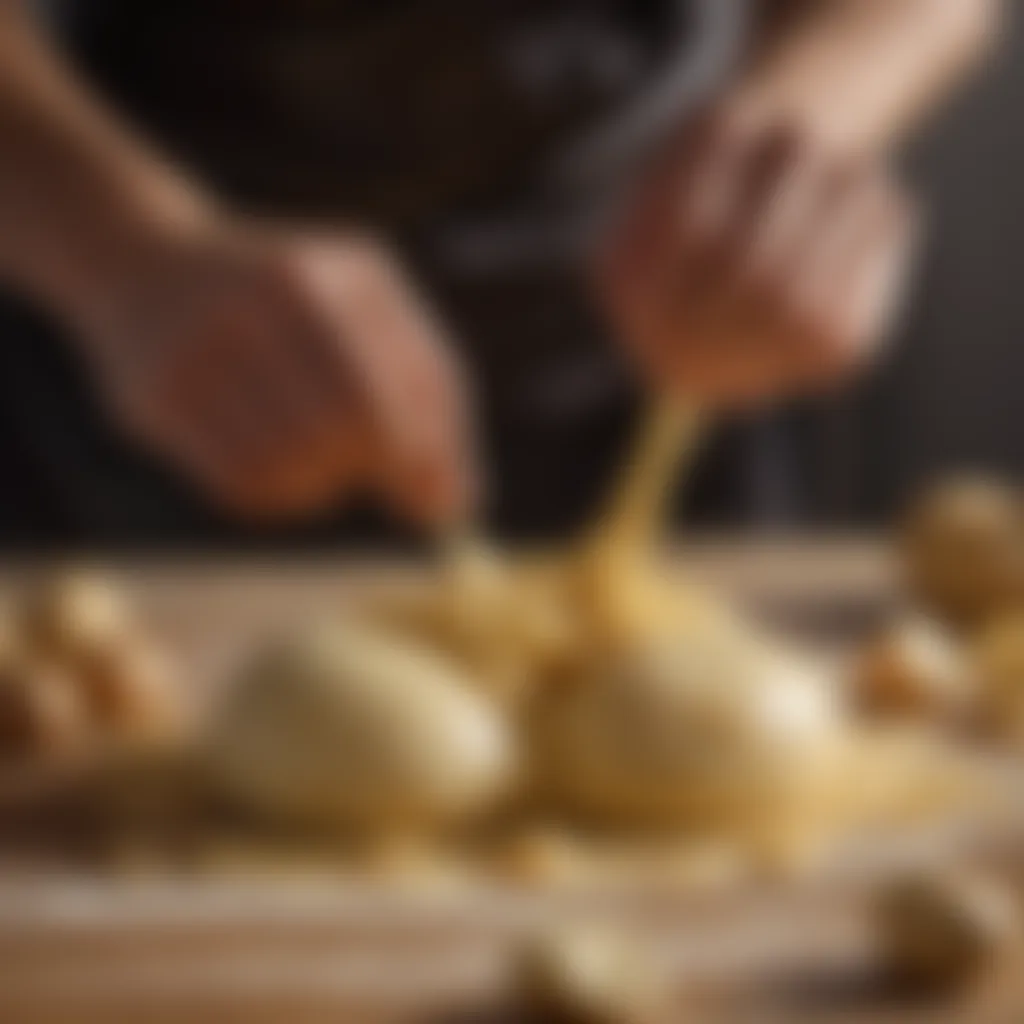
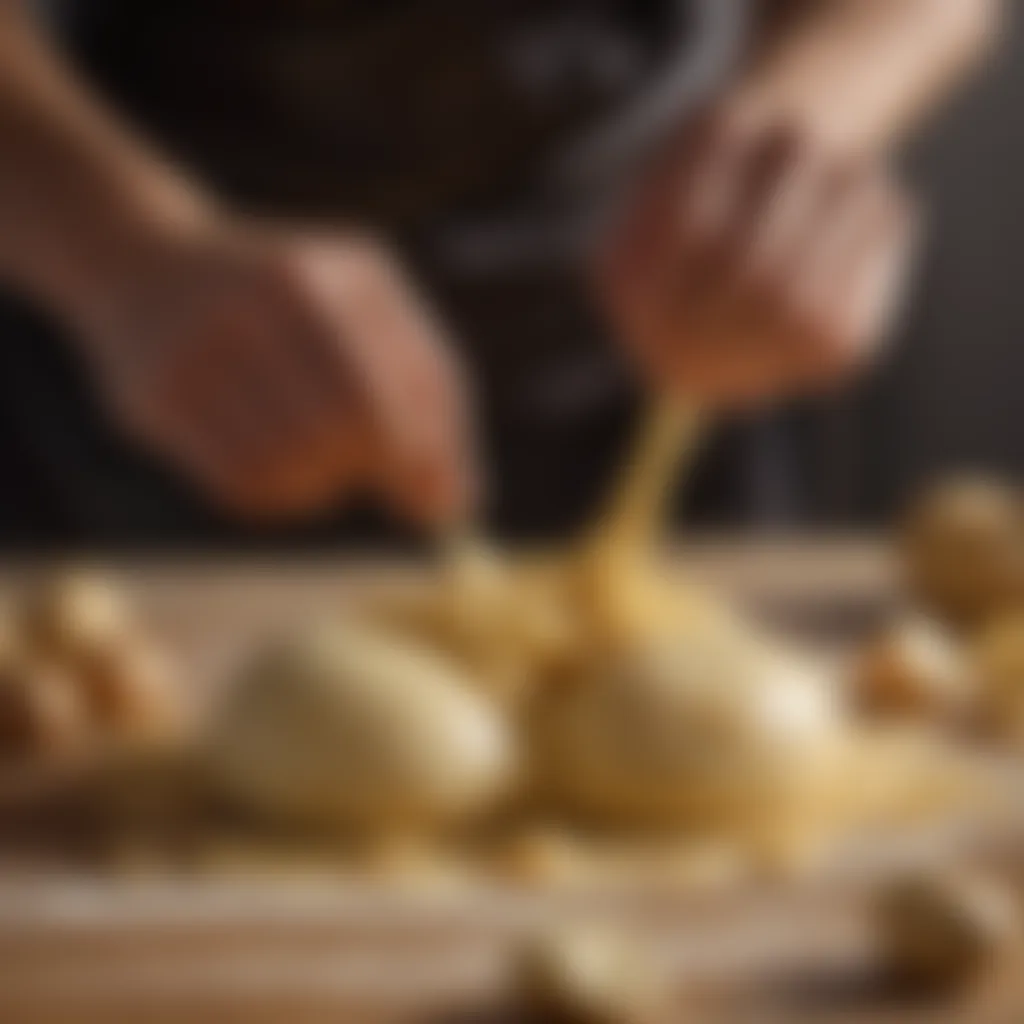
One unique aspect of these ingredients is the influence of flour types. All-purpose flour is often the go-to, but health-conscious cooks might prefer alternatives like whole-wheat for a nuttier flavor, albeit at the risk of a denser texture. Thus, while sticking to the basic ingredient list is beneficial, considering your options opens doors to creating customized versions as per taste preferences.
Step-by-Step Process
Crafting potato dough isn’t just about following a recipe; it’s a ritual that involves several critical steps:
- Cooking the Potatoes: Start by boiling or steaming them until tender. It’s essential to avoid oversaturation, which can lead to watery dough.
- Mashing: Once cooked, allow them to cool slightly before mashing thoroughly. The process should be gentle to make sure lumps are minimized.
- Mixing Ingredients: Combine mashed potatoes with flour, egg, and salt. Work the mixture without over-kneading, as doing so could result in a tough texture.
- Shaping: Roll the dough out and cut into your desired shapes, be it for gnocchi or dumplings.
This sequential process not only ensures consistency but also nurtures an appreciation for the art of dough-making. Each step plays a role in enhancing the final product; for instance, gentle mixing preserves that lightness in dough which is often lost when handled too vigorously.
Enhancements and Variations
Exploring enhancements and variations in your potato dough can elevate simple dishes into extraordinary culinary delights.
Adding Flavors
Adding flavors to potato dough is like adding a splash of color to a canvas; it personalizes and enhances the overall experience. Ingredients such as cheese, herbs, or spices can be incorporated into the dough before shaping.
For example, infusing cheddar cheese into the mix provides richness, while herbs like rosemary can interject a savory aroma. This technique allows for creativity and can cater to various palates. Potential drawbacks include the risk of altering the dough’s moisture content, so adjustments to flour quantities might be necessary. Nevertheless, the rewards are typically worth the effort, yielding flavors that impress.
Using Different Flares
When we talk about using different flares, we're referring to the addition of unexpected elements that make your potato dough stand out. These could be anything from sweet potatoes for a vibrant color and sweet taste to beets for earthiness and hue contrasts. Whole grain flours or even gluten-free alternatives can introduce distinct textures in the dough.
However, while these unique features bring personality to your dishes, they also may result in varied cooking times or require adjustments in ratios. It’s crucial to embrace experimentation—after all, innovation in the kitchen stems from trying new things.
"Cooking is an art form, and the kitchen is the artist's studio, where the possibilities are as limitless as your imagination."
In summation, crafting potato dough is more than a culinary hurdle; it’s a journey of discovery. The careful thought put into each ingredient and technique can turn an ordinary dish into an unforgettable meal, allowing housewives to not just feed their families but impress them with tantalizing creations.
Utilizing Potato Dough
Potato dough holds a remarkable place in both traditional and modern culinary practices. It's not just about making gnocchi or dumplings; it plays a pivotal role in a variety of dishes around the globe. The versatility of potato dough brings a unique texture and flavor profile to any recipe, making it a cherished ingredient for many cooks.
One of the key elements about utilizing potato dough is its adaptability. This dough can be fashioned into various forms—soft dumplings, delicate pastries, or even hearty breads. Each of these preparations demonstrates how potato dough can shine through different cooking methods, catering to a wide range of tastes and preferences. Moreover, the incorporation of potato dough can lead to increased moisture content and improved flavor, enhancing the overall dish.
Dishes Made with Potato Dough
Dumplings and Gnocchi
Dumplings and gnocchi are classics in potato dough applications. They are often celebrated for their pillowy softness and sheer comfort they provide in any meal. The key characteristic of these dishes is their ability to soak up sauces and flavors perfectly. This makes them not just a staple but a beneficial choice in a potato dough guide.
What truly sets dumplings and gnocchi apart is their unique feature of being both robust and light at the same time. For instance, potato gnocchi, made from well-processed potatoes, can give rise to a soft yet sturdy dough that holds its shape under various cooking methods. However, achieving that perfect balance can sometimes be tricky, leading to a disadvantage where overworking the dough can make it denser.
Pastries and Breads
On the other hand, pastries and breads made from potato dough bring an entirely different essence to the table. These items are known for their unique ability to create flaky and tender textures. The introduction of potato into pastries offers a rich flavor, making them immensely popular among home bakers.
The distinct advantage of utilizing potato dough in pastries is its ability to provide moisture and tenderness, often required in baked goods. Yet, it does present challenges, as finding the right balance of flour and potato is crucial to successful outcomes. For instance, too little flour can result in overly sticky dough, making it difficult to handle.
Cultural Variations
Regional Preparations Around the World
Exploring regional preparations around the world is fascinating because potato dough takes many forms and flavors, reflecting the cultures that create them. This aspect adds authenticity and depth to any potato dough guide. Be it the Austrian knödel or Polish pierogi, each showcases the flavorful potential of potato as a base.
One of the standout features of these preparations is their cultural significance. Many dishes are tied to tradition, often featuring unique fillings or cooking methods that enhance their uniqueness. However, while the characteristic varies, they all share the common advantage of being comfort foods that bring families and friends together.
Culinary Traditions and Innovations
Culinary traditions and innovations further highlight the place of potato dough in today’s kitchens. Chefs around the globe are reinterpreting classic dishes and incorporating modern techniques to offer something new. This aspect underscores the creativity behind potato dough's use in contemporary cooking.
Traditional dishes might be reimagined using the same potato dough base but adorned with innovative flavors or techniques. This strategy can lead to delightful surprises for the palate, yet it also poses challenges. As recipes evolve, ensuring that flavor balances remain intact is crucial and can be harder to achieve than it seems.
In summary, understanding and utilizing potato dough encompasses a combination of tradition and innovation, where experiences in cooking range from comforting classics to groundbreaking culinary projects. The essence of potato dough is not just about nourishment but also about the connections and stories shared through food.
Challenges in Potato Dough Crafting
Navigating the realm of potato dough isn't always smooth sailing. The journey comes with its fair share of bumps and twists that can trip up even seasoned cooks. Understanding these challenges is crucial not just for troubleshooting, but also for refining your skills. Each mishap becomes an opportunity for learning, turning cooking into an adventure rather than a chore.
Skimming over the potential problems can leave gaps in knowledge that may hinder one's progress in becoming adept at crafting potato dough. By delving into common issues, we equip ourselves with insight, enabling us to whip up perfect batches every time. Enhancing one's understanding of these challenges lays a solid foundation for building upon these culinary skills in the future.
Common Issues and Solutions
Watery Dough
The menace of watery dough is often the bane of potato enthusiasts. This condition typically arises when too much moisture lingers in the mash, resulting in a mixture that does little justice to the versatility of potato dough. The key characteristic of watery dough is that it becomes sludgy, making it a real pain to work with while compromising the structure of any dish you're aiming to produce.
On the upside, if handled correctly, watery dough can lend a unique quality to dishes. Those looking for a more delicate texture in dumplings might find it beneficial. However, over-reliance on this trait without proper adjustments can lead to gloppy creations. A judicious approach involves draining excess water and adjusting the flour content to restore balance, transforming a potentially disastrous mess into a work of art.
"Water is the enemy of your dough – in careful hands, it can turn into magic, but too much and you might find yourself up the creek without a paddle."
Stretch versus Structure
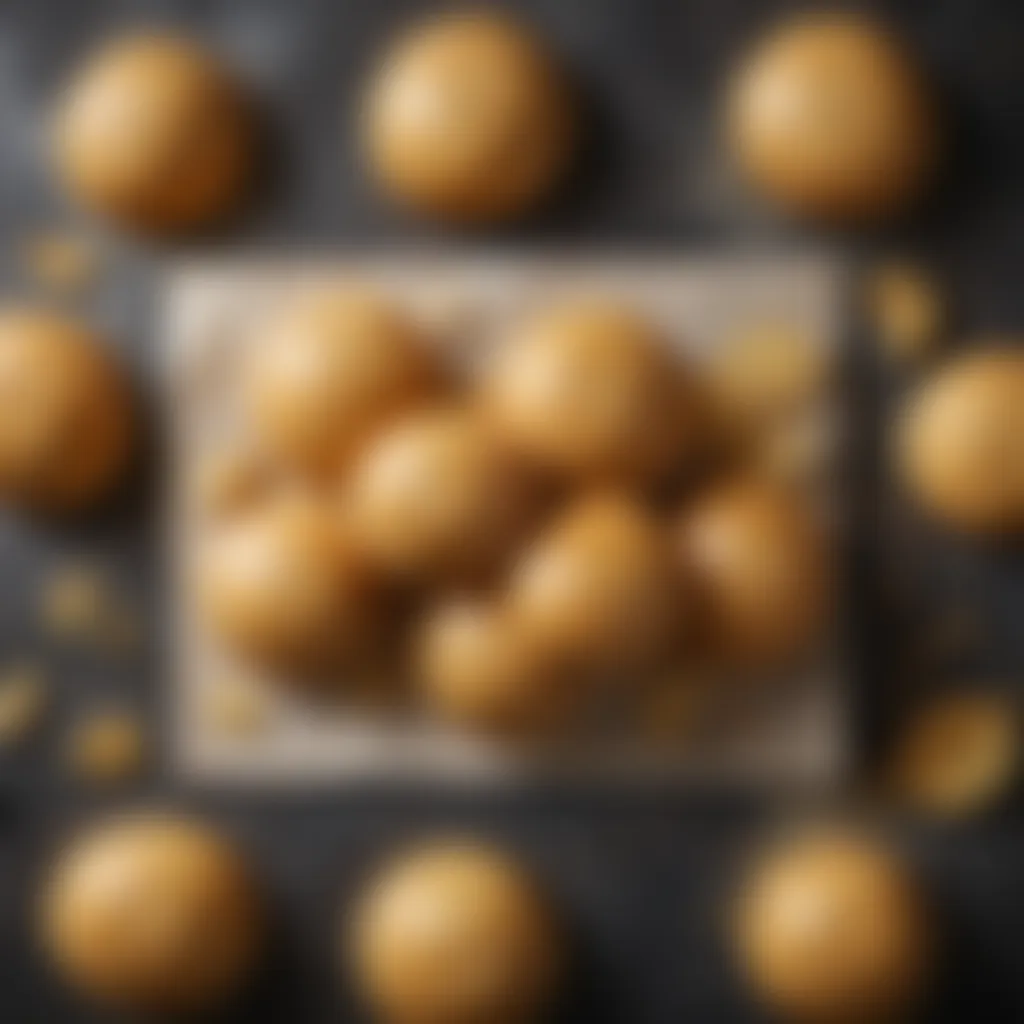
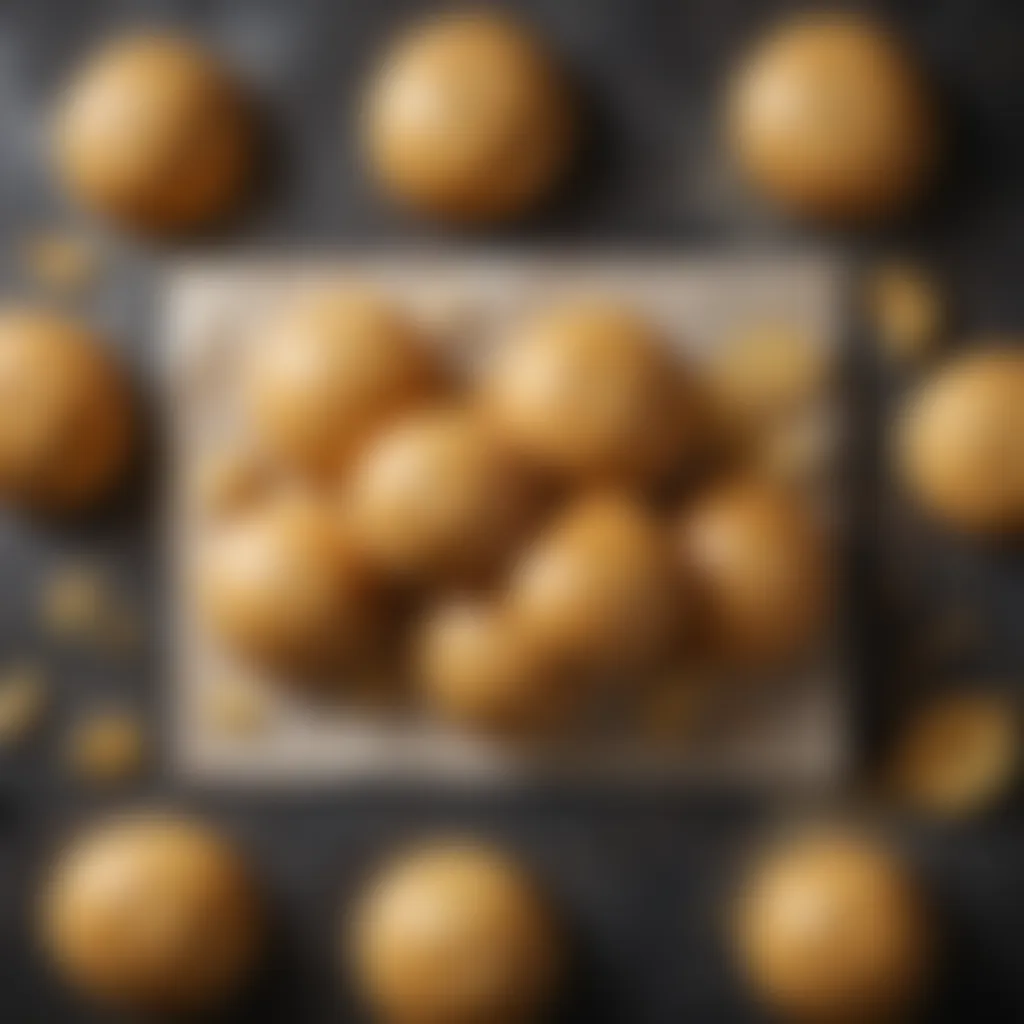
The balance between stretch and structure is another tricky tightrope for cooks to walk. When crafting dishes like gnocchi or dumplings, achieving the right texture is paramount. Stretch denotes the elasticity of the dough, while structure relates to the firmness and stability of the final product. A dough that leans too far towards stretch tends to create a chewy, almost rubbery texture, which could overwhelm the dish.
Conversely, a structure-focused dough may yield a more inviting bite, yet it could lack the fluffiness or softness that many appreciate. Finding the sweet spot between these two elements greatly enhances the eating experience, making this challenge a cornerstone for understanding potato dough. Lasting culinary success hinges on mindful measurements and experimentation with hydration and flour types.
Moving Beyond Basics
Once you've tackled the common challenges, it’s time to elevate your potato creations by moving beyond the basics. Expanding your culinary repertoire means rolling up your sleeves and embarking on a journey that includes new textures and advanced techniques.
Experimenting with Texture
Experimentation is a crucial part of any culinary adventure. Delving into different textures allows you to breathe new life into familiar recipes. Trying out various potato varieties, hydration levels, and even the way you mash can completely alter the outcome.
For those with a homey kitchen atmosphere, this could lead to delightful discoveries like crispier dumplings or softer gnocchi. However, it’s essential to document each experiment to track what works and what doesn’t — lest one succumbs to the chaos of kitchen trials without a compass.
Advanced Techniques
Advanced techniques are where the magic truly begins. From incorporating ingredients like cheese or herbs to experimenting with fermentation, the possibilities are endless. These methods don’t just improve flavor; they can enhance the dough’s characteristics as well.
However, with this power comes responsibility. Using these techniques might complicate the basic processing steps and require some trial and error. A patient approach, along with a willingness to take risks, can lead to exciting and tantalizing results that stand out on any dining table.
In navigating the world of potato dough, challenges are part of the package. Whether you find yourself squaring off against watery dough or struggling to achieve elasticity and structure, every hurdle can be transformed into a stepping stone towards culinary mastery.
Storage and Preservation
Understanding how to effectively store and preserve potato dough is pivotal for ensuring its quality and usability. Potato dough can be delicate and tends to lose its charm if not handled correctly. With the right techniques, you can keep your dough fresh for longer periods and avoid wastage. This section addresses both short-term and long-term methods, allowing you to maintain the integrity of your hard work in the kitchen.
Short-Term Storage Solutions
When it comes to short-term storage, the focus is on techniques that can keep potato dough viable for immediate future use, generally a few days to a week.
Refrigeration Guidelines
Refrigeration plays a key role in preserving potato dough. When you stash your dough in the fridge, it slows down the growth of bacteria and maintains a stable temperature that inhibits spoilage. The recommended way is to wrap your dough tightly in plastic wrap or place it in an airtight container. This keeps moisture from escaping and helps maintain the dough's texture, preventing it from becoming too hard or dry.
Here are a few salient points about refrigeration:
- Temperature Control: Keeping your fridge at 4°C (39°F) is optimal. Higher temperatures can promote spoilage, while lower temperatures might affect the dough's elasticity.
- Visibility: Labeling with the date can help remind you when to use it, ensuring nothing goes to waste.
However, one should note, that if stored too long, even in the refrigerator, potato dough can start to develop off-flavors. It’s best used within a few days.
Freezing Techniques
Freezing is another excellent approach for short-term storage. It allows for a longer preservation period compared to refrigeration, giving you weeks to use your dough without worry. The process involves shaping your dough, wrapping it tightly with plastic, and then placing it in a freezer-safe bag. This prevents freezer burn, a major concern when storing in low temperatures.
Key highlights about freezing:
- Longevity: Freezing can extend shelf life for a month or even longer if done right.
- Convenience: You can thaw just what you need, which is particularly useful for those who don’t cook daily.
However, freezing might slightly alter the texture when thawed, making it slightly less pliable. Knowing how to manage expectations comes into play.
Long-Term Preservation Methods
When it comes to prolonging the life of potato dough well beyond its natural lifespan, long-term storage solutions are crucial. These methods help you retain the dough’s flavor and nutritional aspects while ensuring you don't have to make it fresh every time.
Dehydration
Dehydration removes moisture from the dough, helping to combat the growth of mold and extending how long it can be stored. This process involves rolling out your dough very thin and using a dehydrator or an oven set to a low temperature. Once completely dry, you can store it in an airtight container.
Why choose dehydration? Here’s the scoop:
- Space Saver: Dehydrated dough occupies significantly less space than fresh dough.
- Versatility: You can rehydrate it for use in various recipes, from gnocchi to dumplings, making it quite handy.
The downside of dehydration, however, is that it requires some knowledge of moisture content. If not dehydrated properly, it can lead to spoilage.
Canning and Fermentation
Canning and fermentation offer unique, flavorful ways to preserve potato dough. While canning might not typically apply to dough, incorporating some ingredients like herbs or spices can enhance flavors. Fermentation, on the other hand, invites beneficial bacteria that can alter taste and texture, allowing for a distinctive twist on traditional potato dough.
Here’s why these methods shine:
- Enhances Flavor: Fermenting not only preserves but also enhances flavors, creating a richer palate in the final product.
- Long Shelf Life: Canning can keep for months or years if done correctly, offering convenience in meal prepping.
Though, these methods require more advanced techniques and equipment, which might not be readily available for everyone.
"Proper storage techniques ensure that when you're ready to use your potato dough, it's just as delectable as the day you made it."
Final Thoughts
As we wrap up our journey through the intricate world of potato dough, it’s vital to reflect on the significance this culinary art form holds. Potato dough is not just a means to create various dishes; it embodies creativity, tradition, and adaptability in the kitchen. The ability to harness the humble potato and transform it into a versatile ingredient showcases the beauty of cooking.
The Future of Potato Dough
Looking ahead, the future of potato dough seems promising. As more people grow interested in cooking from scratch, the demand for diverse and innovative recipes will increase. Additionally, experimenting with various varieties of potatoes could lead to new textures and flavors, inspiring creative dishes. There’s also a trend towards incorporating gluten-free options, which further highlights potato dough’s adaptability. With culinary schools and home cooks alike embracing these techniques, we may see a resurgence of traditional potato-based dishes revamped with modern twists.
As chefs innovate, combining cultural influences with classic recipes, potato dough can continue to evolve, nurturing its place in kitchens and restaurants worldwide.
Culmination and Reflection
Investing time in learning this craft opens up a world of possibility—whether you’re making comforting gnocchi or trying your hand at innovative pastries. So, roll up your sleeves, grab those potatoes, and let your imagination run wild in the kitchen!







